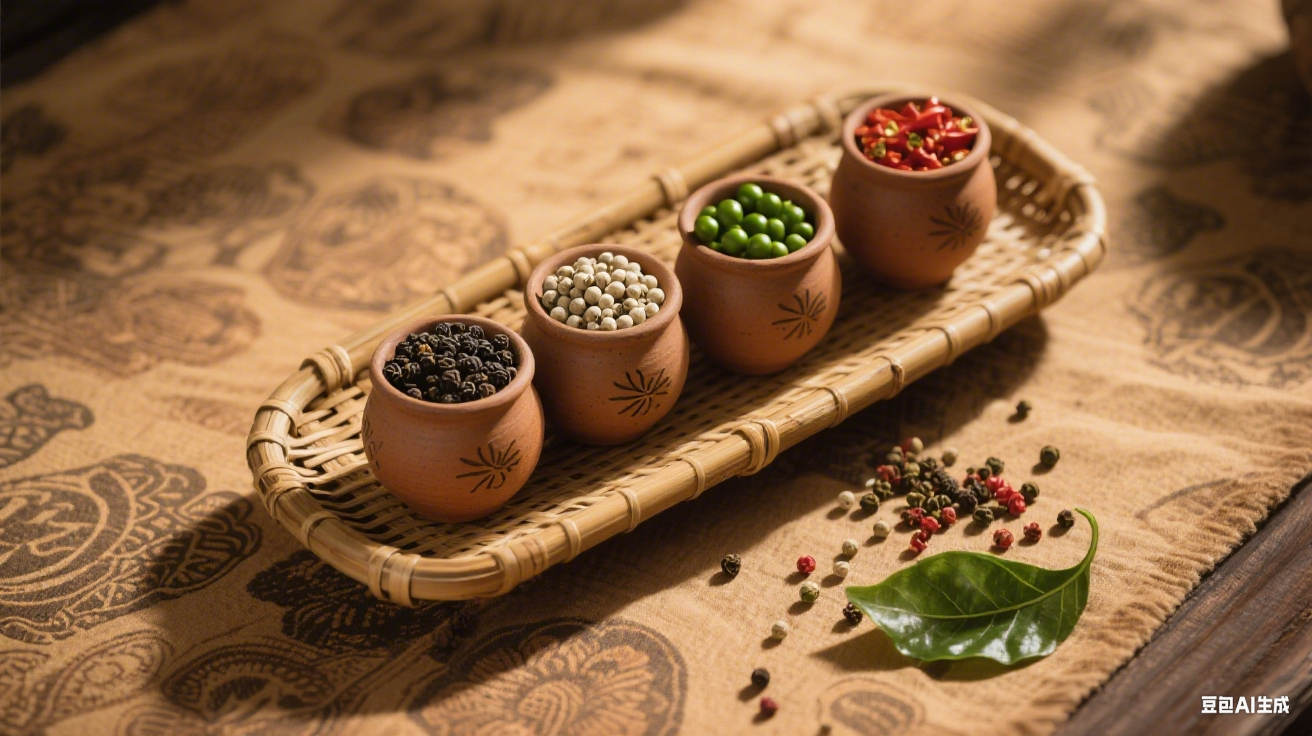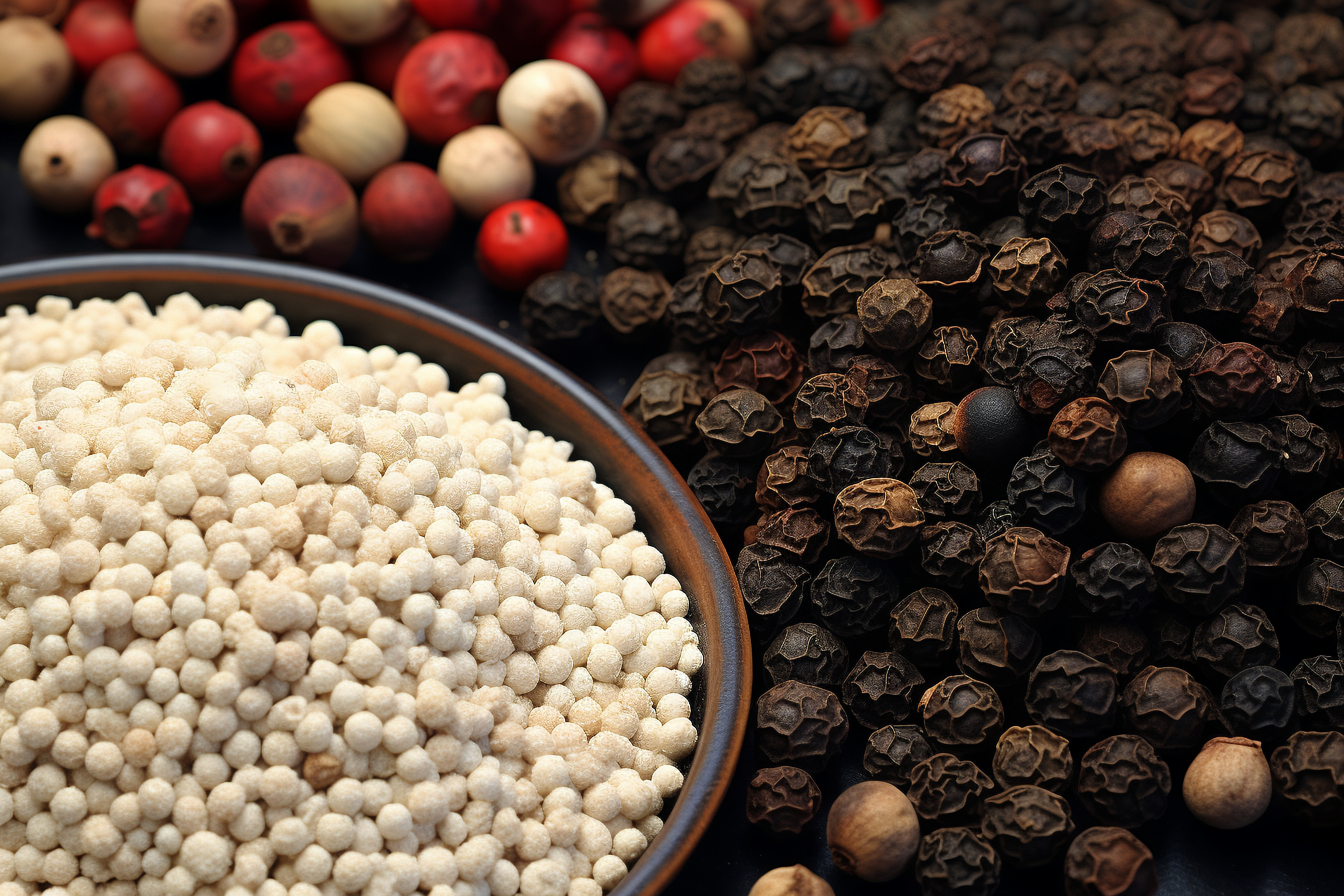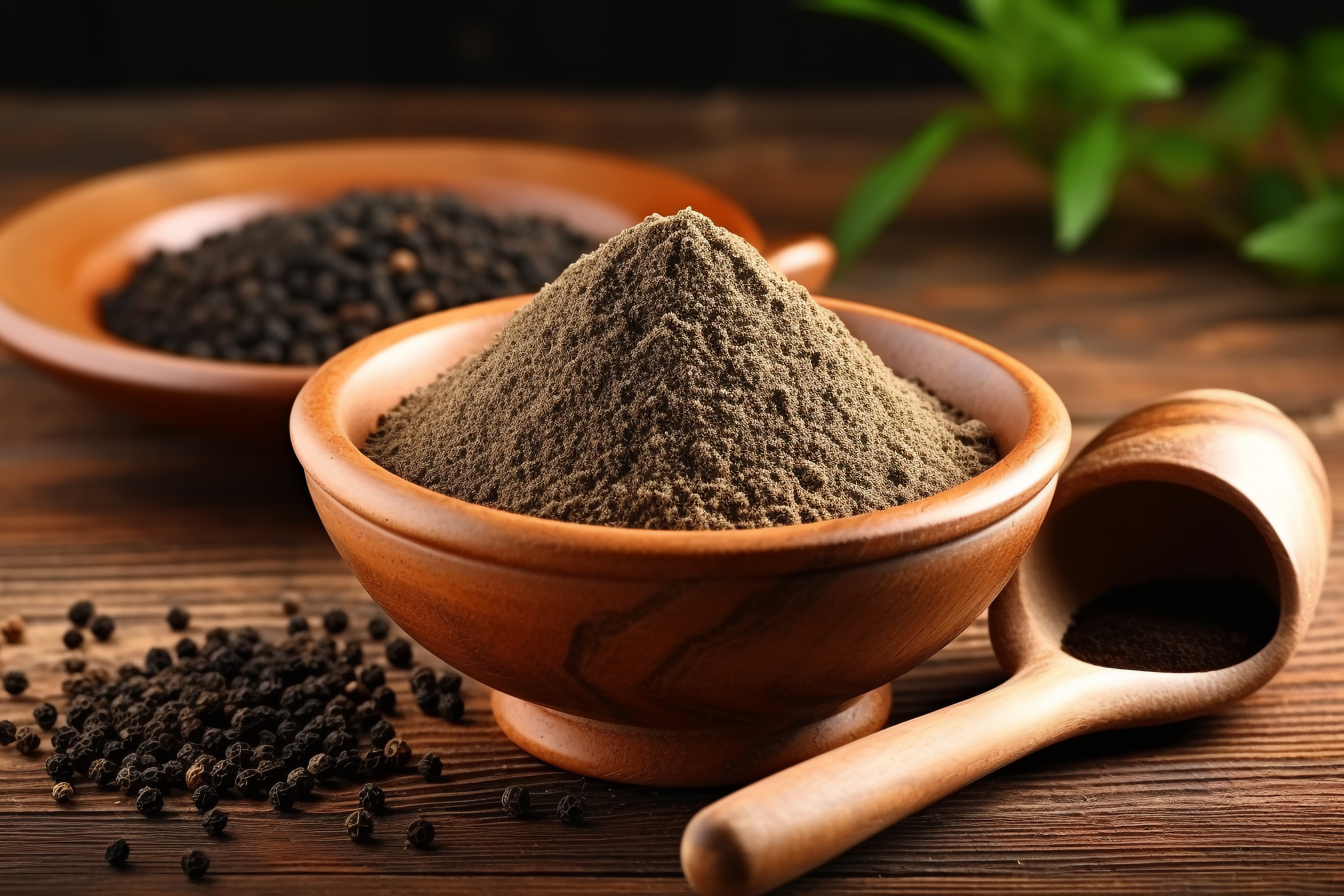Which Pepper Is the Real Deal?
Published:
2025-08-05
"King of Spices" — Pepper
Black, White, and Green Pepper: Which One Is the Real Deal?
Peppercorns may look tiny, but they carry incredible power. Belonging to the genus Piper in the Piperaceae family, pepper is the world's most widely used spice and is often called the "King of Spices."
True pepper is fundamentally different from Chinese Sichuan pepper (Zanthoxylum, Rutaceae). Its Chinese name "Hu" even hints at its foreign origin. Native to the tropics of South and Southeast Asia, China now cultivates around 60 species of Piper, mostly in Taiwan, Guangdong, and Hainan.

The Pepper Family: Same Roots, Different Shades
Pepper is mainly divided into black and white, but both come from the same plant (Piper nigrum). Black pepper has a bolder aroma, pairs better with meat, and is richer in nutrients and antioxidants, giving it a clear edge in cooking.

You may also see green and red peppercorns. Green ones are simply quickly dried unripe berries, while red "peppercorns" aren’t real pepper at all but fruits of Peruvian or Brazilian pepper trees, mainly for decoration.
Name | Botanical source | Harvest | Processing | Features |
Black Pepper | True pepper (Piper nigrum) | Half-ripe pepper | Sun-dried with skin intact | Intense aroma, culinary & medicinal value |
White Pepper | True pepper (Piper nigrum) | Fully ripe red pepper | Soaked, peeled, and dried | Sharper heat, good for digestion, valued in TCM |
Green Pepper | True pepper (Piper nigrum) | Immature pepper | Quickly dried | Milder heat, fresh and light aroma |
Red Peppercorns | Fake pepper-fruits of Peruvian/Brazilian pepper trees | / | Decorative use only | Lacks pepper’s flavor and properties |
Black Pepper: From Flavor to Wellness
In the kitchen, black pepper is as essential as salt. Knowing how to use it unlocks both flavor and health benefits.
Li Shizhen wrote in Compendium of Materia Medica: "Pepper is intensely pungent and warming, a pure Yang substance that benefits cold, damp digestion—but may cause excess heat for those already prone to it."
Its flavor goes beyond steak sauce. Western chefs use freshly ground black pepper to enrich pasta. In Chinese cuisine, Black Pepper Beef and Black Pepper Shrimp are irresistible. In Southeast Asian Tom Yum soup, it’s the essence of the broth.

Tip: Black pepper releases aroma when heated, but above 180℃ (356 ℉) it turns bitter. For steak, season at the end for perfect flavor.
Fun Facts About Black Pepper
Beware of fakes: Up to 30% of "black pepper powder" on the market is adulterated. True pepper powder has distinct granules and a warm, rich aroma—not a harsh, stinging heat.
The "flavor magician": Pepper’s mild tingling stimulates endorphin release, making its heat addictive.
Smart pairings: Black pepper with meat is a perfect match, cutting gaminess and boosting aroma. Try it with popcorn or chips for a sweet-spicy surprise.
Unlock the King of Spices
From flavor to wellness, from selection to pairing, knowing your pepper lets you unlock its full value and enjoy the unique charm of the "King of Spices."
Relative news







 sales@garlicare.com
sales@garlicare.com

 Feedback
Feedback 